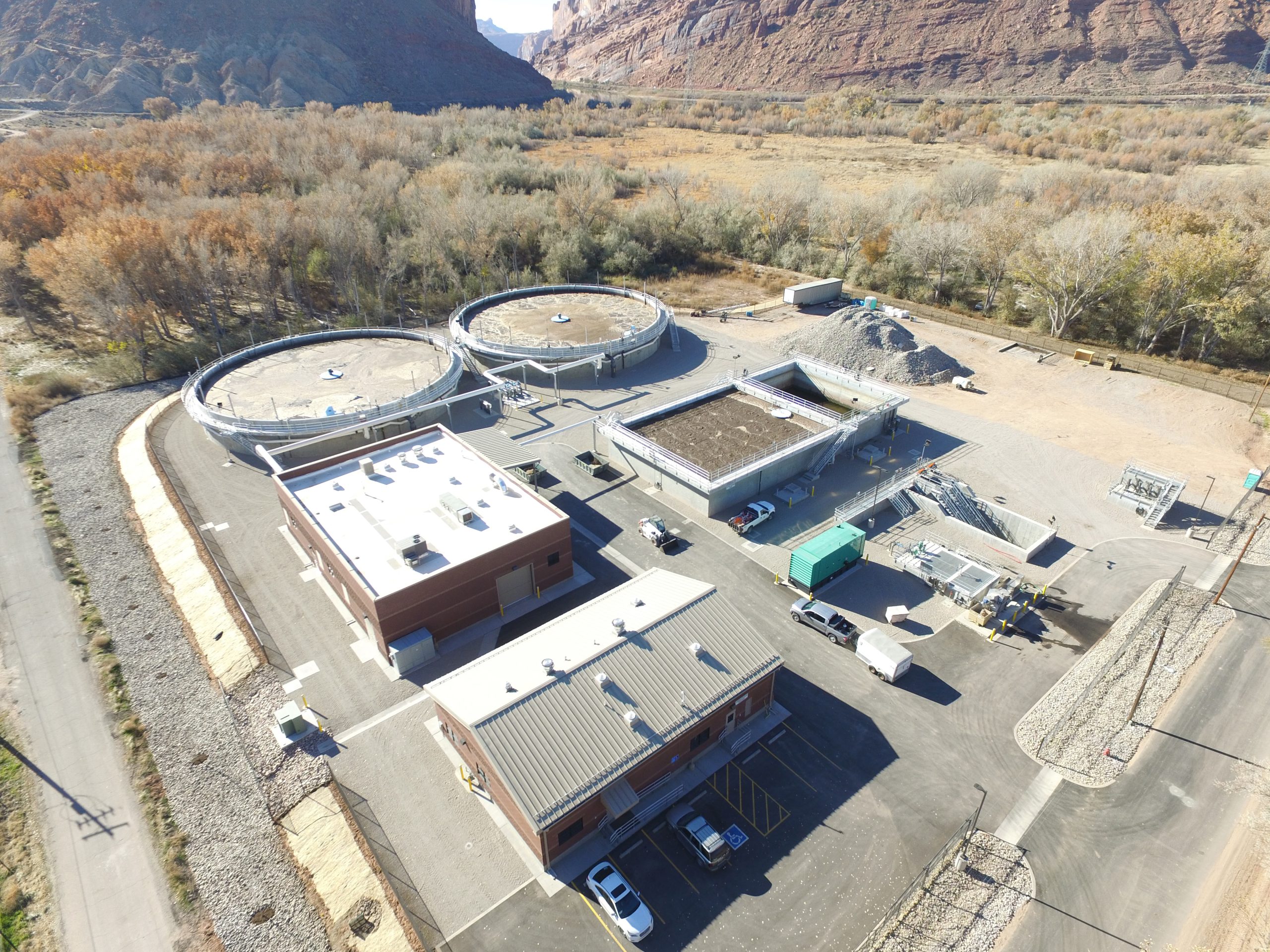Some information may be outdated.
The City of Moab is celebrating the official grand opening of its new wastewater reclamation facility during a ribbon-cutting ceremony on Thursday, Dec. 13, at 2 p.m.
Light refreshments will be served in the administration building.
The facility, located on 5 acres at 1007 W. 400 North, is directly south of the site that once housed the city’s more than 60-year-old former sewer treatment plant. The wastewater reclamation facility (WRF) has been operating for approximately four months while crews monitor the new system to ensure compliance with state and federal regulations. The old plant has been dismantled and removed, and the 3.5 acres have been reclaimed and revegetated, including planting approximately 50 new trees, for use as public open space.
“The old sewer facility relied on outdated technology that struggled to keep up with the growing demands of our community,” said Moab City Manager David Everitt. “Our new facility is state-of-the-art and will ensure the city and the immediate region (will) effectively meet our needs for many decades to come.”
Greg Fosse, the city wastewater reclamation facility superintendent and chief operator, said he is more than impressed with the operations and efficiency of the new facility.
“The new plant is operating far beyond expectations with regard to Environmental Protection Agency (EPA) reportable standards,” Fosse said. “It is well within compliance for state and federal requirements. It’s incredible, the numbers that we’re reaching at the plant. The fact that this plant was in complete compliance within such a short time, that’s very unusual for a new plant.”
The new WRF has a total hydraulic capacity of 1.75 million gallons per day compared to the 1.5-million-gallon capacity of the old sewer plant. Most importantly, according to Fosse, the new facility will be able to process significantly more effluent using far less water.
“Because this is state-of-the-art processing, it will handle almost twice the loading level of the old plant,” Fosse said. “It isn’t about the water hydraulics, it’s about the loading and what the capabilities of that loading are.”
Solar panels were recently installed on the administration building at the WRF to add energy efficiency to the offices. The city also hopes to install a larger array of solar panels to help offset a portion of the plant’s energy use.
Limited number of facility tours available
Appreciate the coverage? Help keep local news alive.
Chip in to support the Moab Sun News.





